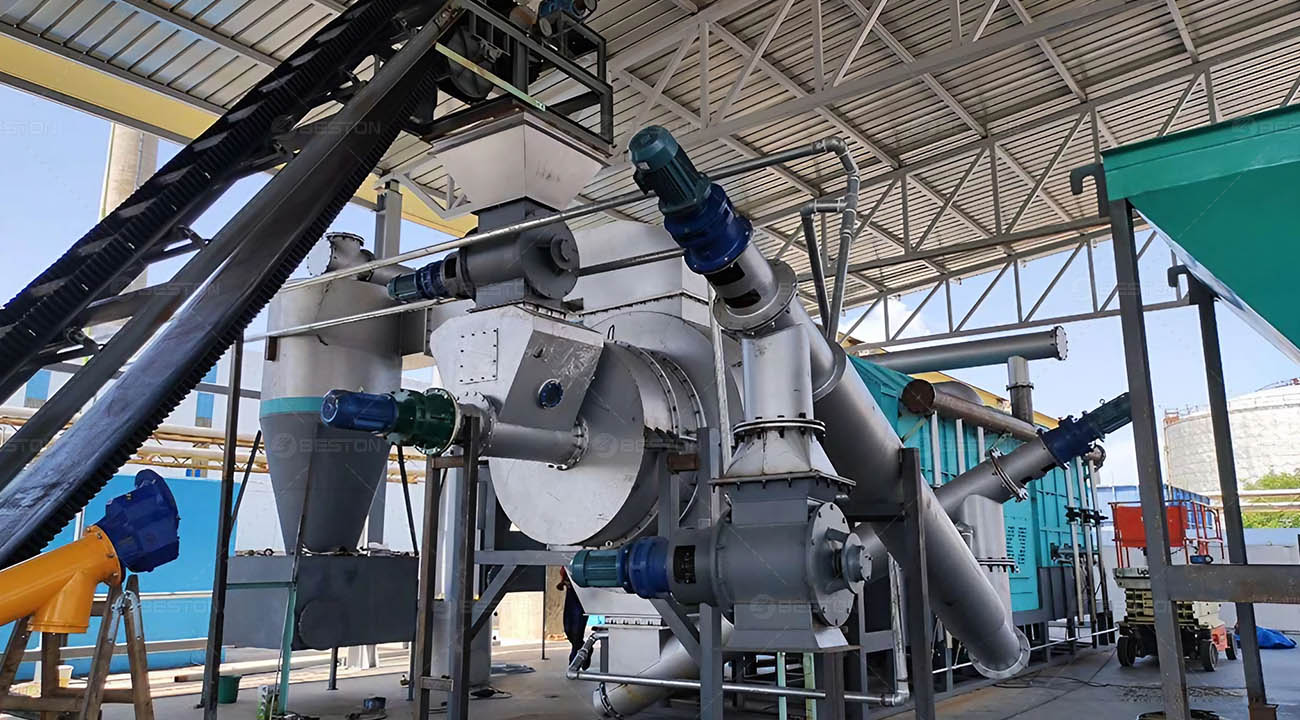From Waste Biomass to Soil Additive: The Biochar Life Cycle
In the realm of sustainable agriculture, biochar emerges as a transformative solution, turning waste biomass into a valuable soil additive. This article delves into the intricate stages of the biochar life cycle, exploring its origins, the transformation process, its agricultural applications, environmental benefits, and the challenges and prospects for the future.

Introduction
Biochar, a carbon-rich material derived from the pyrolysis of organic matter, plays a pivotal role in fostering sustainable agricultural practices. Today, modern biochar production equipment can produce this “black gold” efficiently. Its unique properties make it a compelling option for soil improvement, carbon sequestration, and waste management.
The Origins: Biomass Waste
1. Diverse Sources of Biomass Waste
Biochar’s journey begins with the selection of appropriate biomass waste. This can range from agricultural residues and forestry by-products to organic waste from various industries. Each source contributes distinct qualities to the final biochar product.
2. Importance of Material Selection
Choosing the right biomass waste is crucial for the biochar’s efficacy. The material’s composition and characteristics influence the final biochar product’s nutrient content, porosity, and stability, impacting its performance in soil.
The Transformation Process
1. Pyrolysis: A Closer Look
The heart of the biochar life cycle lies in the pyrolysis process in the biochar reactor. This thermochemical conversion involves heating biomass in the absence of oxygen, leading to the breakdown of complex organic compounds into stable carbon structures. The temperature, duration, and heating rate during pyrolysis significantly influence biochar properties.
2. Factors Influencing Biochar Quality
Achieving optimal biochar quality requires meticulous attention to several factors. From feedstock selection to pyrolysis conditions, each element affects the biochar’s physical and chemical attributes. Understanding these factors is key to producing biochar with consistent and desirable properties.

Biochar in Agriculture
1. Enhancing Soil Fertility and Structure
Biochar’s introduction to agricultural soils brings forth a myriad of benefits. The biochar produced by the biomass pyrolysis plant ensures stable physical and chemical properties. Its porous structure enhances water retention, nutrient availability, and microbial activity, promoting optimal conditions for plant growth. Additionally, biochar’s carbon content serves as a stable organic matter source, contributing to long-term soil fertility.
2. Scientific Mechanisms of Plant Growth
Delving into the scientific realm, biochar positively influences plant growth through various mechanisms. These include improved nutrient retention, enhanced soil structure, and the facilitation of beneficial microbial communities. Understanding these interactions is vital for harnessing biochar’s full potential in agriculture.
Environmental Benefits
1. Carbon Sequestration
Beyond its role in agriculture, biochar stands as a promising tool for carbon sequestration. By locking carbon in a stable form, biochar mitigates the release of greenhouse gases, contributing to climate change mitigation. The integration of biochar in sustainable practices aligns with global efforts to reduce carbon footprints.
2. Mitigating Greenhouse Gas Emissions
The environmental benefits extend to the reduction of greenhouse gas emissions. Biochar’s application to soil not only sequesters carbon but also minimizes the release of methane and nitrous oxide, potent greenhouse gases associated with conventional agricultural practices.
Challenges and Future Prospects
1. Addressing Potential Drawbacks
While biochar holds immense promise, acknowledging potential drawbacks is essential. Issues such as feedstock availability, energy consumption during pyrolysis, and the long-term effects on soil microbial communities require careful consideration. Sustainable biochar implementation demands a balanced approach that considers both benefits and challenges. Beston Group Co., Ltd. is committed to developing diversified waste biomass recycling solutions. You can ask questions about sustainable agricultural development.
2. Emerging Research and Innovations
The biochar field continues to evolve with ongoing research and innovations. Advances in pyrolysis technology, tailored biochar formulations, and sustainable sourcing practices pave the way for a more refined and efficient biochar life cycle. Staying abreast of these developments is crucial for optimizing biochar’s role in sustainable agriculture.
In conclusion, the journey from waste biomass to soil additive epitomizes the biochar life cycle—a cycle intricately woven with environmental consciousness, agricultural enhancement, and a commitment to a sustainable future. As we navigate the complexities of modern agriculture, biochar stands as a testament to the potential found in harmonizing human activity with the natural world.